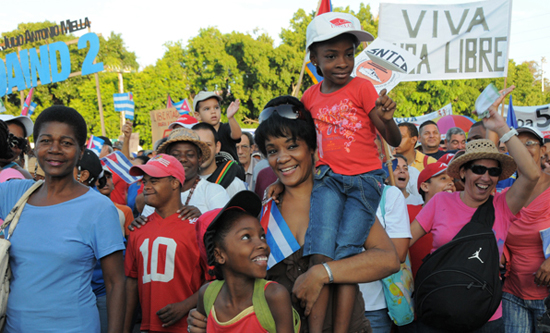
Earlier this year, two new laws concerning Female Workers’ Maternity and Special Social Security Regimes were enacted in Cuba. They aim to address the demographic challenges Cuba faces through its ageing population and strengthen support for working mothers who are central to discussions about the workforce, fertility and productivity. Haydee Franco Leal, director of Policies and Projections at the National Institute of Social Security, outlined the objectives as: encouraging Cuban women to have more children in order to replace the ageing population; ensuring the active participation, in all aspects of society, of the growing population of those aged over 60; and encouraging the employment of all those able to work, including women with children.
The changes are accompanied by a rise in the social security budget to 6bn Cuban pesos, which is set to double by 2030. They include: increasing and extending maternity benefits; allowing other carers to share these benefits; new and reduced charges for childcare centres, and ensuring benefits for mothers employed outside the state sector.
A changing population
Life expectancy in Cuba is 78. One fifth of the population is over 60, with significant numbers in retirement. By 2021 more Cubans will be leaving the workforce than entering it at current rates.
The social achievements, particularly in health care, that mean greater quality and longevity of life, have brought their own challenges, particularly when combined with a low fertility rate. Workforce planning, social care and pensions are all being discussed across Cuba. The emigration of young people contributes to this tension.
Following the Revolution, life expectancy and the fertility rate rose dramatically. While life expectancy continues to rise, fertility boomed then dropped rapidly in the late 1960s – and continues to fall. The fertility rate currently stands at 1.71 children per woman of childbearing age, one of the lowest in the region; a result of increased access to free contraception and abortion, and health education, which ensures women are able to control their reproductive health. Increasingly, women are having one child only, attributing this to cramped living conditions or living with relatives. 42% of the female population aged over 15 are formally employed, a figure that is rising. Women are concentrated in professional jobs; 66% of technical professionals are women and 53% of scientists. Women from these professions explain the lack of childcare as a factor in their decision not to have children; this problem affects different regions in different ways, but inadequate resources, including building materials to construct more nurseries, mean spaces do not meet the demand. Caring for children still too often falls to women once they return from paid work.
New benefits
The new laws make it easier for women to have children and ensure women having children are able to work. The policies’ focus on women reflects the reality of their position as the main carers, including in single-parent families, and their responsibility for family planning. The changes include:
Extended benefits
Increased and extended maternity monetary benefits, paid monthly, must at least meet the minimum wage. Women working two jobs will receive maternity benefit from each, ensuring adequate financial support and meeting the needs of women currently working multiple jobs. Benefits come with greater security, ensuring those on fixed-term contracts receive full pre- and postnatal benefits.
Decree 339 protects women in the state sector. Decree 340 protects women workers registered in special schemes, including self-employed workers, artists and ‘usufructuaries’ of agricultural land, ensuring those who have not paid a full 12-month contribution to their Social Security prior to and during pregnancy are entitled to full benefits. This will benefit a significant number of women at a time when many people are changing their employment situation.
Once women have taken the amount of pre- and postnatal leave considered necessary for their health, they are able to return to work if they choose and claim the benefit alongside their salary, until the child’s first birthday. Whilst a pay gap along gender lines does not exist in contract terms, women taking time off to care for children are economically affected and these measures will begin to address this.
Wider support: childcare centres and rights for the family
The option that already exists, for a partner to take leave on 60% of their salary to care for a child instead of the mother, has now been extended to grandparents. This is accompanied by an extension of unpaid leave for all family members, offering further flexibility. A new payment system for childcare centres, and half-board schools for families with two or more children, aims to improve childcare access, with a particular focus on larger families. The Federation of Cuban Women is discussing extending and improving access to childcare centres.
The changes recognise the crucial role women play in both the productive and reproductive roles of society. As Franco Leal says, ‘this guarantees the sustainability of our social security system, which is the same as saying our socialist social system’.
Rachel Francis
Fight Racism! Fight Imperialism! 259 August/September 2017




